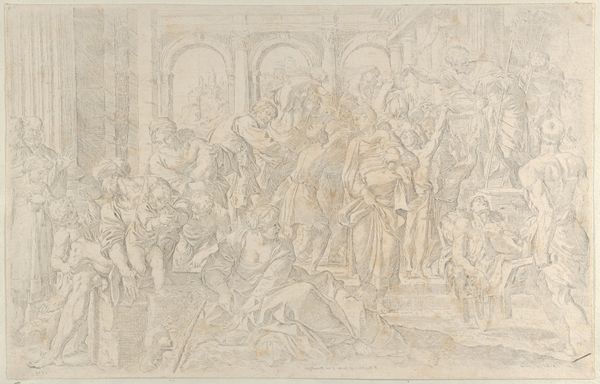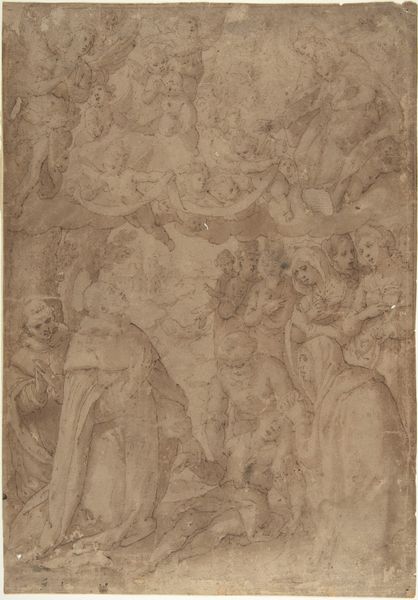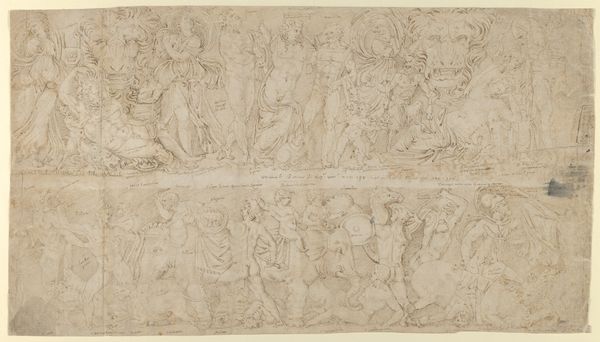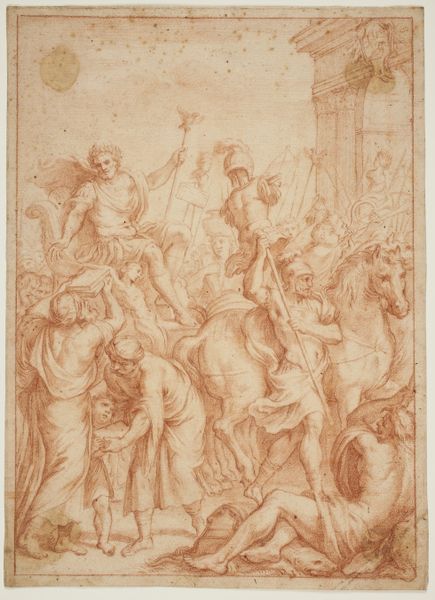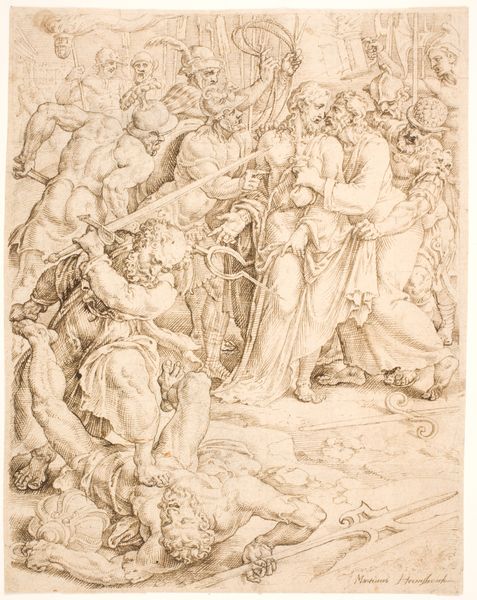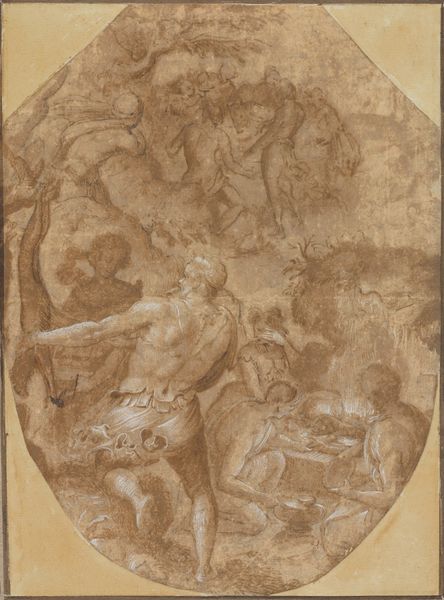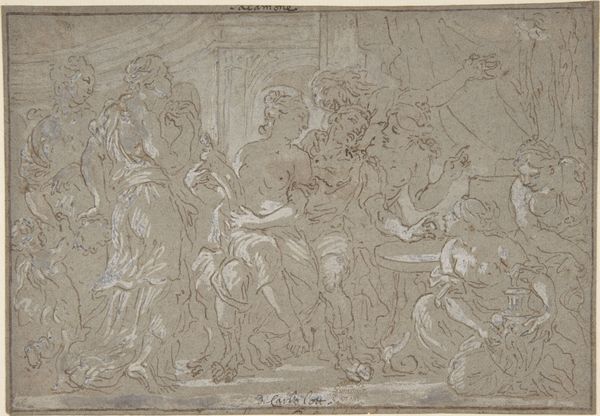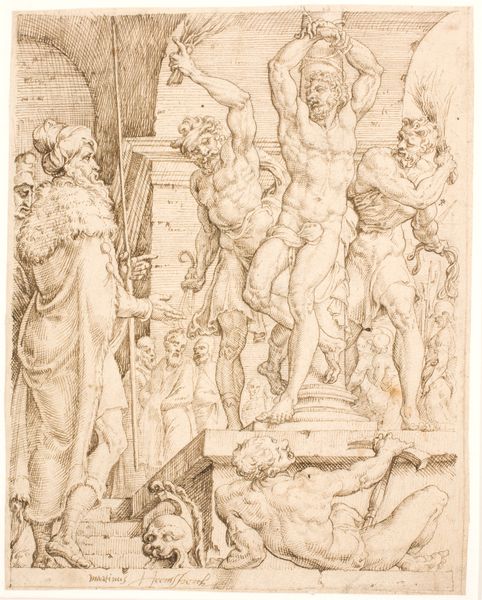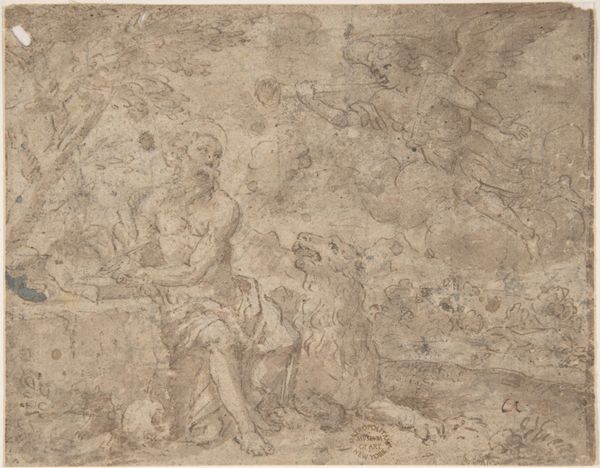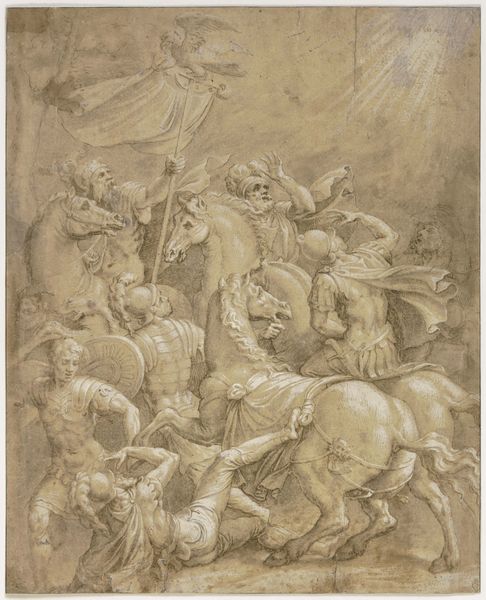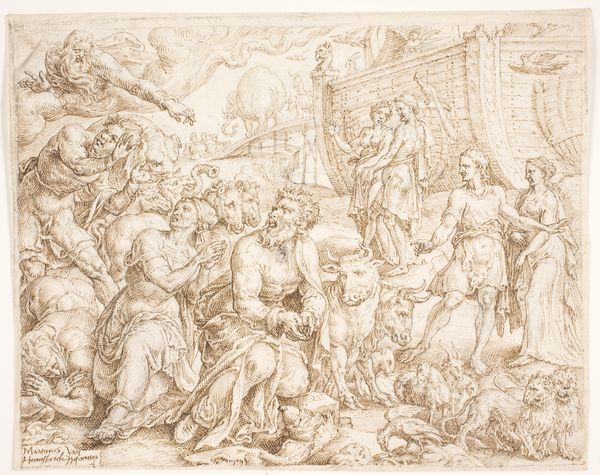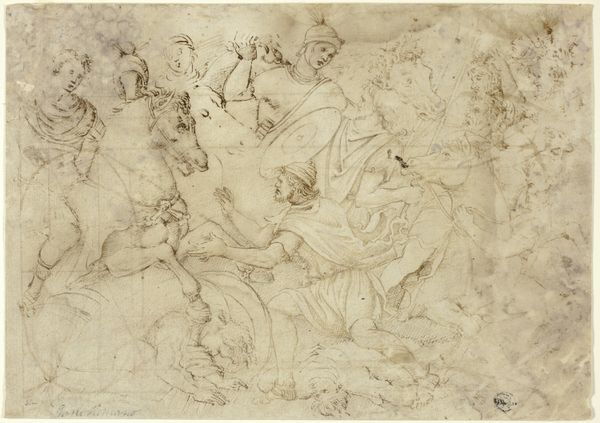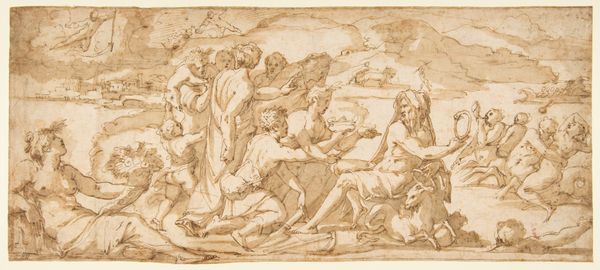
drawing, print, ink, pen
#
drawing
#
baroque
#
ink painting
# print
#
figuration
#
ink
#
pen
#
history-painting
Dimensions: 8 7/16 x 13 7/16in. (21.5 x 34.2cm)
Copyright: Public Domain
Curator: Oh, there's such a somber, powerful stillness radiating from this pen and ink drawing, "The Martyrdom of St. Andrew." Did Giovanni Battista Spinelli really capture such raw emotion using so little? Editor: Indeed. When viewing Spinelli's depiction of Saint Andrew's martyrdom from circa 1630 to 1660, now housed at the Met, it’s impossible to ignore the socio-political undertones. These kinds of historical depictions have often been deployed as propaganda. Curator: Propaganda... well, maybe! I'm not as certain as you are. But those deep umber inks seem to flow from a place of intense reflection, a wrestling with faith. I’m always curious what inspired these baroque pieces. Did something big happen in Spinelli's own life? Did his best pal get crucified and no one even tried to help? That’s my question anyway. Editor: While personal motivation could've played a part, we also can't separate it from the broader European context. Consider how martyrdom narratives often serve to reinforce existing power structures and hierarchies. How these images were often aimed at a working class that were, you know, actually getting crucified by early Capitalists. Curator: Mmm, interesting, alright. You're really looking for this to be a political allegory. I, myself, am sort of drawn in by the energy that's been concentrated on and around the subject; look at those swirling figures at the lower portion of the cross. This St. Andrew must have been somebody... even in death! Editor: Perhaps. Still, note the dynamic interplay between those observing from the sidelines and St. Andrew. Power dynamics become visibly evident if you compare this work to Caravaggio's David and Goliath. Curator: Well, no one can deny this is emotionally charged storytelling that’s meant to incite powerful reactions in those that consume it, but I want to remind you, before you give all the credit to propagandists and socio-political motives, to remember the man whose emotions helped conjure all of this in the first place. Editor: A vital point. Reflecting on the artist’s psyche as the engine for production allows for a more layered analysis, helping us resist reducing artistic expression to mere political or historical events.
Comments
No comments
Be the first to comment and join the conversation on the ultimate creative platform.
